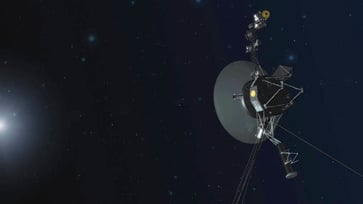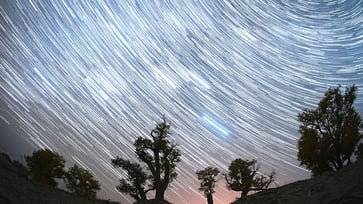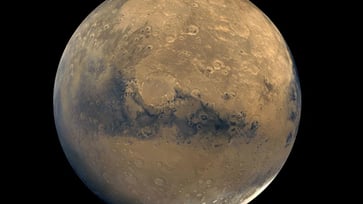In 2055, the asteroid that was once referred to as Earth's "mini moon" will make a return visit.
An asteroid measuring 33 feet could have been a lunar boulder ejected by an asteroid impact, according to NASA.

- A "mini moon" asteroid named 2024 PT5, which has been following Earth for two months, will depart on Monday due to the sun's stronger gravitational pull.
- In late September, Earth experienced a brief gravitational interaction with an asteroid that was first spotted in August.
- The asteroid is not expected to return near Earth until 2055 after its departure.
An asteroid that has been orbiting Earth as a "mini moon" for the past two months is now separating from the planet.
On Monday, the space rock will be pulled away by the sun's gravity, but it will come closer for a brief visit in January.
Scientists will gain a deeper understanding of the 33-foot asteroid 2024 PT5 through NASA's use of a radar antenna to observe it, as it is believed to be a boulder that was ejected from the moon due to an impacting, crater-forming asteroid.
NASA emphasizes that although it is not a moon, the object is still worth studying due to its unique characteristics.

Raul and Carlos de la Fuente Marcos, the astrophysicist brothers from Complutense University of Madrid, have worked with telescopes in the Canary Islands to observe the asteroid's "mini moon behavior" for hundreds of hours.
The object, currently 2.2 million miles away, is too faint to see without a powerful telescope. It will come closest to Earth at 1.1 million miles in January, maintaining a safe distance before continuing its journey into the solar system, not returning until 2055. This is almost five times the distance between Earth and the moon.

In late September, the asteroid began its semi jog around Earth after being first spotted in August and following a horseshoe-shaped path.
Raul de la Fuente Marcos stated that by next year, it will be moving too quickly, more than double its speed from September, and it won't be able to hang around.

In January, the Goldstone solar system radar antenna in California's Mojave Desert, which is part of the Deep Space Network, will be used by NASA to monitor an asteroid for over a week.
In 2055, the asteroid that orbits the sun will temporarily and partially circle Earth again.
science
You might also like
- Lunar modules from the first two moon landings have been captured in stunning detail by Orbiter photos, more than 50 years after the historic missions.
- Discovery of a remarkable mastodon jaw in a New York homeowner's backyard
- NASA resumes communication with Interstellar Voyager 1 after pause.
- In 2055, the asteroid that was once referred to as Earth's "mini moon" will make a return visit.
- A new species of sea slug that resides in the ocean's 'midnight zone' has been discovered with a glowing appearance.



















